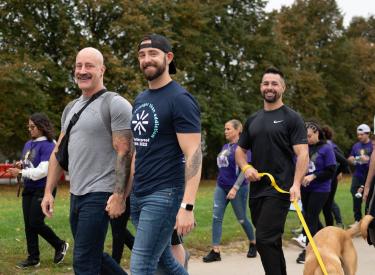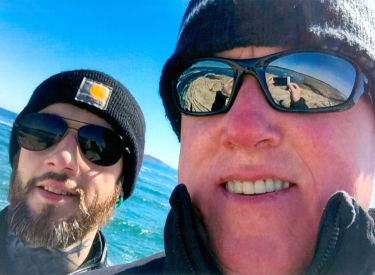
My Name is Ann
I came of age in the seventies, a heady time for women in North America. Smack-dab in the middle of second-wave feminism, my baby-boom peers and I headed off to university in our miniskirts and tie-dyed T-shirts, assured by Gloria Steinem and a host of others that the world was ours for the taking. We could, in Steinem’s words, “grow up to be the men we wanted to marry.”
Not for us the confining roles of our fifties mothers, harnessed to aprons, and what seemed like cookie-cutter lives. Not for us the quiet desperation, the Valium, the acquiescence.
And for me? Not the path of my mother. Sitting in my dorm room, unpacking my things, I was unequivocal on one point: my life was going to look different. Very different. If there was one trap I was determined I would never fall into, it was alcoholism. Risky drinking? Maybe. It was frosh week. There were keg parties and buckets of what we called “Purple Jesus” in my immediate future. Romantic drinking? Yes. There was a lot of dating ahead. But alcoholism? Never.
My mother was the poster girl for the sixties alcoholic: a stay-at-home mum who mixed her cocktails with little pills. Her drink of choice was rum and Coke, with rum playing the starring role. Her pill of choice: Valium.
Of course, she wasn’t alone. By the end of the sixties, two-thirds of the users of psychoactive drugs—Valium, Librium—were women. In fact, between 1969 and 1982, Valium became the most commonly prescribed drug in the United States. In 1978, it was estimated that a fifth of American women were taking “mother’s little helper.”
My mother was prescribed plenty, and she drank plenty. It was a lethal mix. During the day, she would take to her bed. Once night came, she would rise to roam the halls, ice cubes tinkling. Angry and bitter, she’d deliver soliloquys on the unfairness of life and our personal shortcomings. This went on into the wee hours of the morning. It made getting to school difficult. It made life difficult. Still, we mentioned her behavior to no-one. My mother’s drinking was our family secret: ours to protect, no matter what. It would have been unthinkable to do otherwise. We were a tribe, and the walls were high.
And so I set out to be like my father: a hard-working professional, with a great reputation. I married, and eventually had a son. I juggled work and motherhood, day shift and night shift. And as the years passed, I added a little Pinot Grigio to the mix. Chopping vegetables for the evening meal, overseeing homework, I would sip a glass of cold white Italian wine—a glass I might top up for dinner.
Nothing in my behavior looked like my mother’s. If I had an addiction, it was work. A professional journalist, I was known for a series of award-winning publications. I was known for showing up, and getting the job done. I loved my work, I loved my son, I loved my life. Through my 20s, my 30s and my 40s, life unfolded with its regular dramas, but all was good.
Until it wasn’t. Sometime in my early 50s, I hit the perfect storm of trouble: menopausal depression, empty nest syndrome, a move to a new city for a big job. Lonely, overworked and sad, I changed my nightly habits. Sitting in a restaurant by myself, a pile of work by my side, I would order a third glass of wine. Slowly, those nightly glasses of morphed into four. In time, four became five. And when it hit five, I took my well-paid self to treatment.
That was five years ago. Today, I can say it will ease: my name is Ann, and I am in recovery. Like my mother, I am the poster girl for my generation. Professional, well educated and high-functioning, with a penchant for Pinot Grigio.
Throughout the developed world, women are closing the gender gap on risky drinking—and some of us are falling through the cracks. Toe to toe with men in the workplace, toe to toe at the bar. In fact, in some communities, young women are coming close to outpacing their male counterparts. In terms of consumption, men are plateauing or slowing down, but the trajectory for women is up.
It may have epidemiologists scratching their heads, but not the women I speak to. Most of them just nod. They know all too well the pressures of modern life, the release valve of a good glass of wine. This is a generation that has been told that they have to be perfect at home, perfect at work, perfectly thin and perfectly together. Over time, perfectionism is tedious, exhausting.
Is alcohol the modern women’s steroid, enabling her to do the heavy lifting necessary in a complex world? For me, the answer is yes. And for me, the consequences were profound. It’s sneaky like that, alcoholism. Progressive, determined, it will creep up on you when you’re not paying proper attention, when you’re dancing as fast as you can.
It crept up on me. And before I quite knew what was happening, I slipped down a rabbit hole far darker than anything I had ever imagined. It was confounding, and the journey out was long and protracted.
But when the light returned, I found myself in a new friendship with the one woman I had forsaken: my mother. One of the richest treasures of sobriety has been my ability to say, with gratitude, “I am my mother’s daughter.” Two poster girls from different eras: joined by blood, cursed by drink, and blessed with a profound depth of understanding.
Originally published in 2017.



